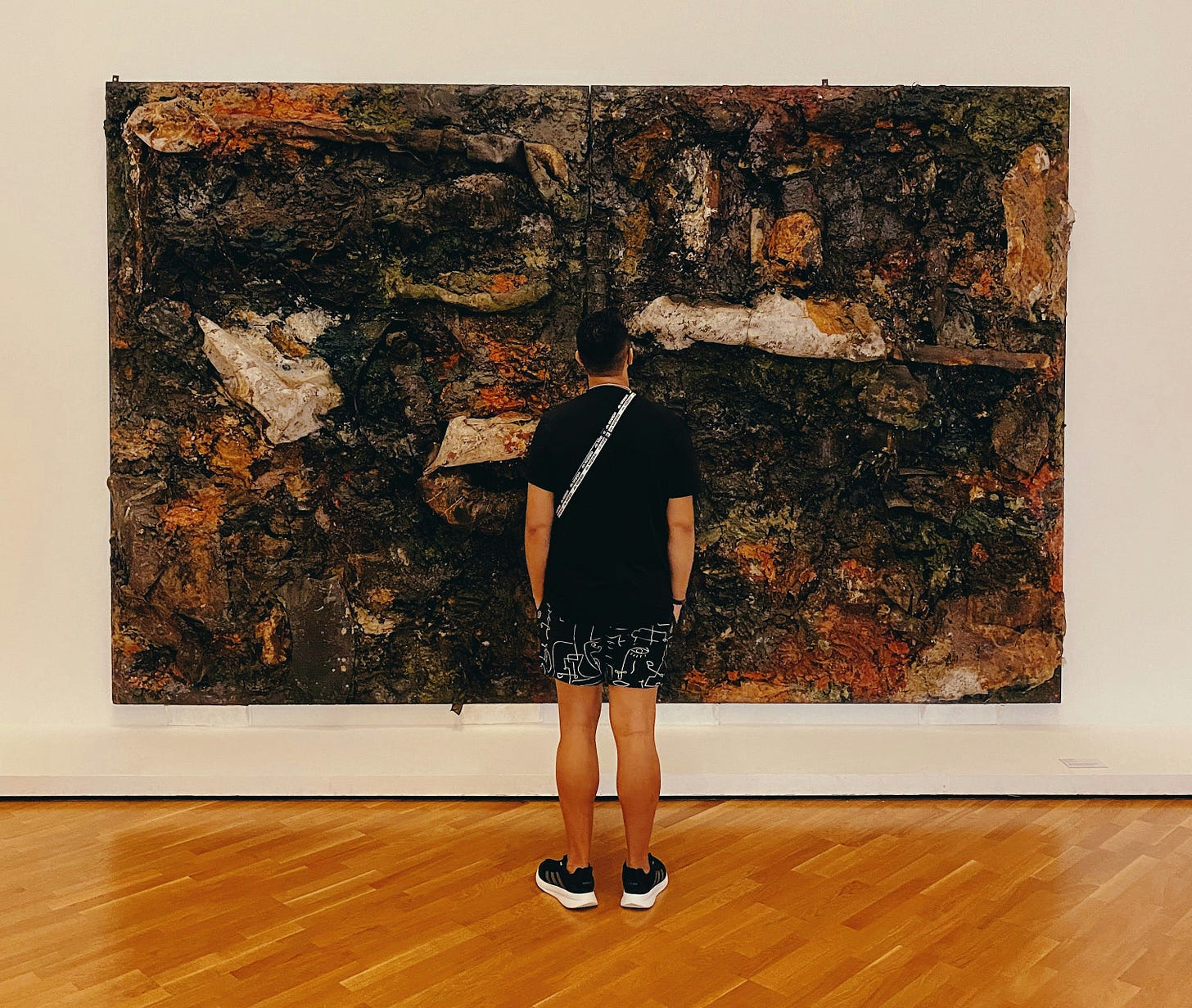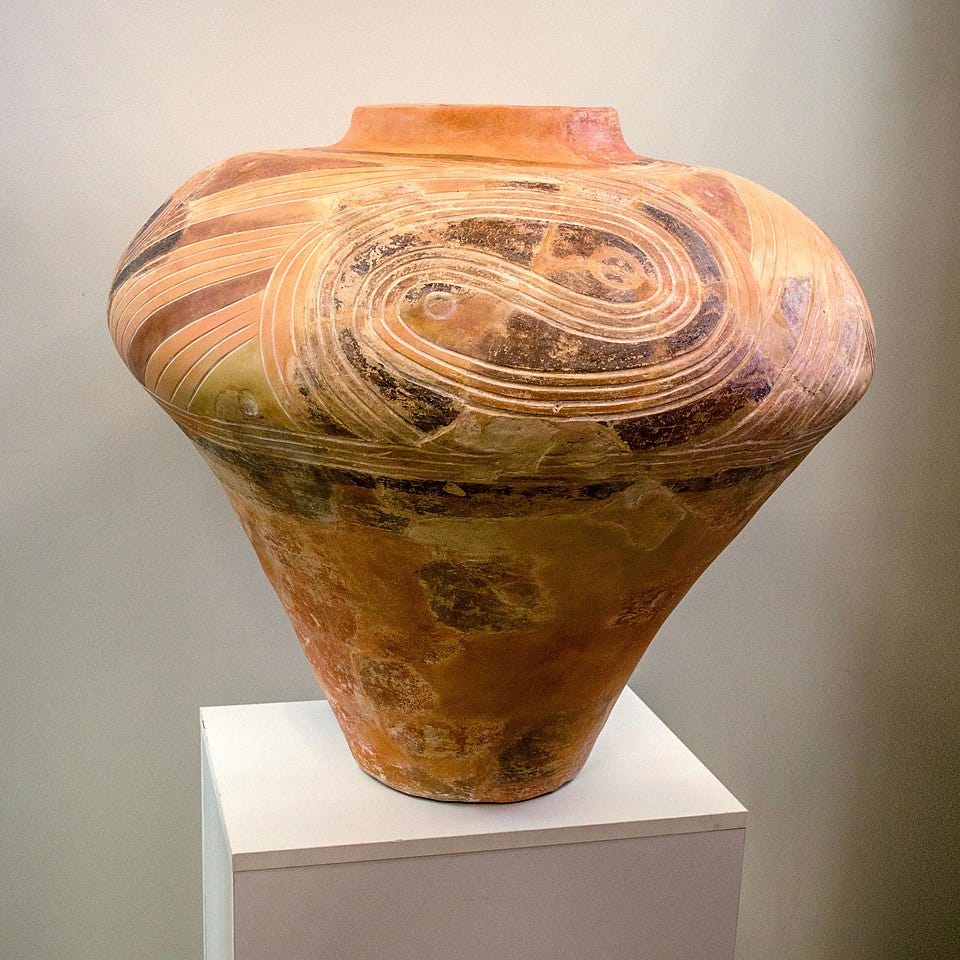
A number of my colleagues are beginning to focus heavily on the art world and the use of art and antiquities to transfer assets and launder money. As K2 Integrity’s Tommaso Di Ruzza wrote in the fall in the Journal of Art Crime, “The art and antiquities market, known for its glittering auctions and monumental prices, conceals a shadowy underworld where illicit transactions are deftly interwoven with aesthetic grandeur.”
And why not?
Art is portable. High-value art works are exclusive. Art markets are opaque, featuring a culture of privacy, which illicit actors find appealing. And the value of art is subjective, so works of art can easily be exploited to launder money, move misappropriated assets, and fund terrorist organizations.
In addition, as Di Ruzza points out, the Financial Action Task Force’s (FATF) does not include participants in the art and antiquities market in the “designated non-financial businesses and professions” (DNFBPs) category in its 40 Recommendations, so they’re not universally required to comply with customer due diligence obligations, suspicious transaction reporting, recordkeeping, or other AML/CFT measures.
How can art and antiquities, as well as non-fungible tokens, be exploited to commit financial crimes?
Money laundering and sanctions evasion. The high-value art market accommodates anonymity, which is a money-launderer’s dream!
For example, a drug cartel has $50 million in narcotics proceeds it needs to move, hide, or integrate into the formal financial system.
The group purchases a high-value work of art by Monet at an anonymous auction (auction houses have voluntary AML policies), and stores the painting in a “freeport”—a vault or other type of storage facility that is often located in tax-friendly locations, where artworks are stored without paying import duties or taxes because the work is considered to be “in transit.”
The Monet can sit in the freeport facility until the cartel decides to sell it. A buyer can purchase the painting without it ever leaving the freeport facility and retrieve it at their convenience. Meanwhile, the cartel now has “clean” proceeds from a legitimate transaction.
The UK’s National Crime Agency in January 2024 issued an alert highlighting the sanctions evasion and money laundering risks presented to UK industries linked to the art storage sector. The alert provided a couple of useful case studies that highlight for sector participants the anti-money laundering/countering the financing of terrorism (AML/CFT) risks present in the sector.
In a 40-page study of the facilitation of money-laundering and terrorism financing in 2022, the US Treasury also highlighted the use of the high-value art market as a mechanism to move dirty funds and find terrorist operations.
The problem is that although Treasury said the high-value art market CAN be abused, it assesses that it’s the high-value art market that presents the biggest money-laundering risk, but that it’s a limited portion of the broader art sector. That means, the vulnerabilities presented by the sector gave way to other priorities.
Subjective value. Because the value of art is in the eye of the beholder (for example, I think Chagall’s work is highly overrated - something my seven-year-old cousin can paint with watercolors), the value of art is easily manipulated and can be inflated. The Basel Institute for Governance flagged a 2017 case in which an art dealer was caught by undercover US federal agents proposing to launder the funds of a stock manipulation scheme through a series of staged transactions involving a Picasso painting, Personnages.
The dealer proposed to sell the artwork to the agent for the exact amount of proceeds of crime from the scheme, and then buy back the artwork at an agreed reduced price. The difference in price would serve as the dealer’s fee, and the latter transaction would make it seem like the agent had received the proceeds of crime through a legitimate source.
Terrorism financing. The United Nations Interregional Crime and Justice Research Institute (UNICJRI) in June 2024 published a report that explored the nexus between cultural looting and smuggling and terrorism. In the Middle East, UNICJRI noted, the ISIS terrorist group engaged in massive excavation and exploitation of archeological sites to fund its operations. ISIS even created a “department” to manage the looting and commercialization of the artifacts it stole in Iraq and Syria.
Cartels as FTOs. The current administration designation of certain cartels as foreign terrorist organizations (FTOs) presents additional risks. The US art market is massive, and InsightCrime last month flagged art and other cultural assets as attractive money-laundering venues for criminal actors. Given the US art market’s significant global presence and the fact that it’s subject to very few AML controls, these newly designated terrorist groups are sure to abuse it for financial gain and to threaten our national security.
I agree with Nate Sibley—a fellow and director of the Kleptocracy Initiative at the Hudson Institute and one of my favorite anti-corruption and AML contacts—who recently wrote in The Hill that imposing basic AML responsibilities on participants in the art market could go a long way in stopping the abuse, especially with Chinese money-laundering organizations grabbing up illicit financial duties for the drug cartels.
There is a nexus between China’s emergence as the world’s fastest-growing art market and its status as the main driver of the fentanyl trade that creates new cause for concern.
It is highly likely that the Chinese brokers who have taken over money laundering operations for the Mexican cartels are now funneling drug dollars into the U.S. art market. And given Chinese elites’ voracious appetite for expensive art, it is even possible that valuable works are being used as illicit payment for fentanyl precursors, much as trafficked wildlife products are.
Holding the sector accountable for lax AML controls could help destroy cartel finances and terrorist financing networks - a key Trump administration priority.
It may be high time to focus on the art market.

Given the millions of dollars in precious artifacts looted from Ukraine in an effort to sell the precious items and erase the Ukrainian identity in what amounts to a cultural genocide, it’s not difficult to see why it may be time to address the vulnerabilities of the art market. According to Ukraine's Ministry of Culture and Information Policy, Russia has stolen more than 1.7 million cultural heritage items from occupied Ukrainian territories and is now selling these artifacts on the black market.
In what has been described as "the single biggest collective art heist since the Nazis pillaged Europe in World War II," Russian forces systematically looted Kherson's cultural institutions during their retreat in November 2022. The operation targeted the Kherson Regional Art Museum, from which approximately 10,000-11,000 artworks out of a collection of 13,500 were stolen, and the Kherson Regional Museum of Local History, where nearly 28,000 artifacts, including ancient coins, Greek sculptures, and Scythian jewelry, were taken. Even the bone fragments of Prince Potemkin were removed from St. Catherine's Cathedral.
UNICJRI in its report noted that financial gain is not the only goal of smuggling and destruction of cultural heritage. Although financially lucrative, the looting also aims to impose political control by erasing symbols of identity. And although the UNICJRI report focuses on militant and insurgent groups, Russia’s looting and black-market sales of stolen Ukrainian art and cultural artifacts also helps erase Ukrainian identity in addition to enriching corrupt Russian oligarchs and soldiers fighting Russia’s war in Ukraine, whose meager paychecks can be supplemented by the sales of the stolen items.
Is it any wonder that the illicit trade in looted art and antiquities flourishes during armed conflicts?
Non-fungible tokens (NFTs). The US Treasury a year ago published its 2024 NFT Illicit Finance Risk Assessment, which assessed the vulnerabilities associated with NFTs and NFT platforms, which can be exploited by illicit actors for money laundering, terrorist financing, and proliferation financing.
NFTs are digital units or tokens that are recorded on a blockchain and are often used to certify authenticity or represent “ownership” of certain rights or assets, according to the Treasury. NFTs claim to represent ownership of various forms of media, real estate, access rights, and intellectual property, among other uses; however, an NFT may in reality confer no legal claim to a referenced asset.
Treasury assessed that NFTs and NFT platforms were to date rarely used for proliferation or terrorist financing, but they are are highly susceptible to fraud and scams and can be and are used to launder proceeds from predicate crimes often in combination with other techniques or transactions meant to obfuscate the illicit source of funds. In addition, some NFT firms and platforms lack appropriate controls to mitigate risks to market integrity, money laundering and terrorist financing, and sanctions evasion.

Nike is being sued for allegedly committing NFT fraud after it suddenly shut down its crypto division, RTFKT, causing significant losses to NFT investors.
Two 23-year-olds from California, Gabriel Hay and Gavin Mayo, two months ago were arrested for allegedly defrauding investors of more than $22 million in crypto assets through a series of NFT rug pulls - frauds in which developers hype up a project to lure investors, and then abruptly abandon it (pull the rug out from under the investors), taking the funds with them.
Whether you consider NFTs art or not, they’re here to stay, and the illicit finance risks, including those from fraud and scams continue to proliferate in that sector.
Daily average online NFT sales as of last year were more than $50 million, according to the CPA Journal. The highest price for an NFT recorded so far was $69.3 million for a series of digital artwork by the artist Beeple, which was sold at Christie’s, and the global participation in the NFT market is expected to increase from 5 million users in 2021 to 20 million users in 2027, according to Statista, which cites increasingly mainstream adoption of NFTs and their potential applications, and the continued emergence of new use cases for the technology.
As the NFT market grows, so will illicit actors’ exploitation of it. Awareness of these new and developing technologies is key to keeping clients and the global financial system secure.
Caution is key.
Whether it’s Picasso or weird looking NFT images, these assets can and are being used to launder dirty proceeds and evade sanctions, among other things.
The US Senate in 2020 found that Putin buddies, the Rotenberg brothers, evaded sanctions using art deals. The report focused, in particular, on a case study documenting how the sanctioned Russian oligarchs appear to have used transactions involving high-value art to evade sanctions imposed on them by the United States in response to Russia’s invasion of Ukraine and illegal annexation of Crimea in 2014. In total, the Senate subcommittee identified more than $91 million in transactions by Rotenberg-linked shell companies after sanctions were imposed on the brothers.
The Rotenbergs used shell companies and family members to purchase millions of dollars in art—both well known sanctions evasion methodologies—through an intermediary.
Tracing the ownership of anonymous shell companies, including those involved in high-value art transactions, should be part of due diligence, and art market participants should engage in enhanced due diligence to ensure these transactions are not linked to sanctioned individuals and entities.
The use of intermediaries, such as art advisors, is common in the high-value art world, so doing some extra research into an art advisor’s previous clients and exploring their connections to government officials would be useful. In the case of Gregory Baltser—a US citizen who facilitated art purchases for the Rotenbergs—his business is based in Moscow, which should have raised red flags.
Given the lack of transparency in the high-value art market, and its increasing use in money laundering and other financial crimes, regulators should pivot their focus to this sector, especially because of its use by terrorist organizations and money laundering groups. Stakeholders in the art sector should monitor regulatory developments and closely examine guidance provided by regulators in the United States and abroad that could impose additional AML/CFT requirements on them and help them navigate the complexities of the sector.





